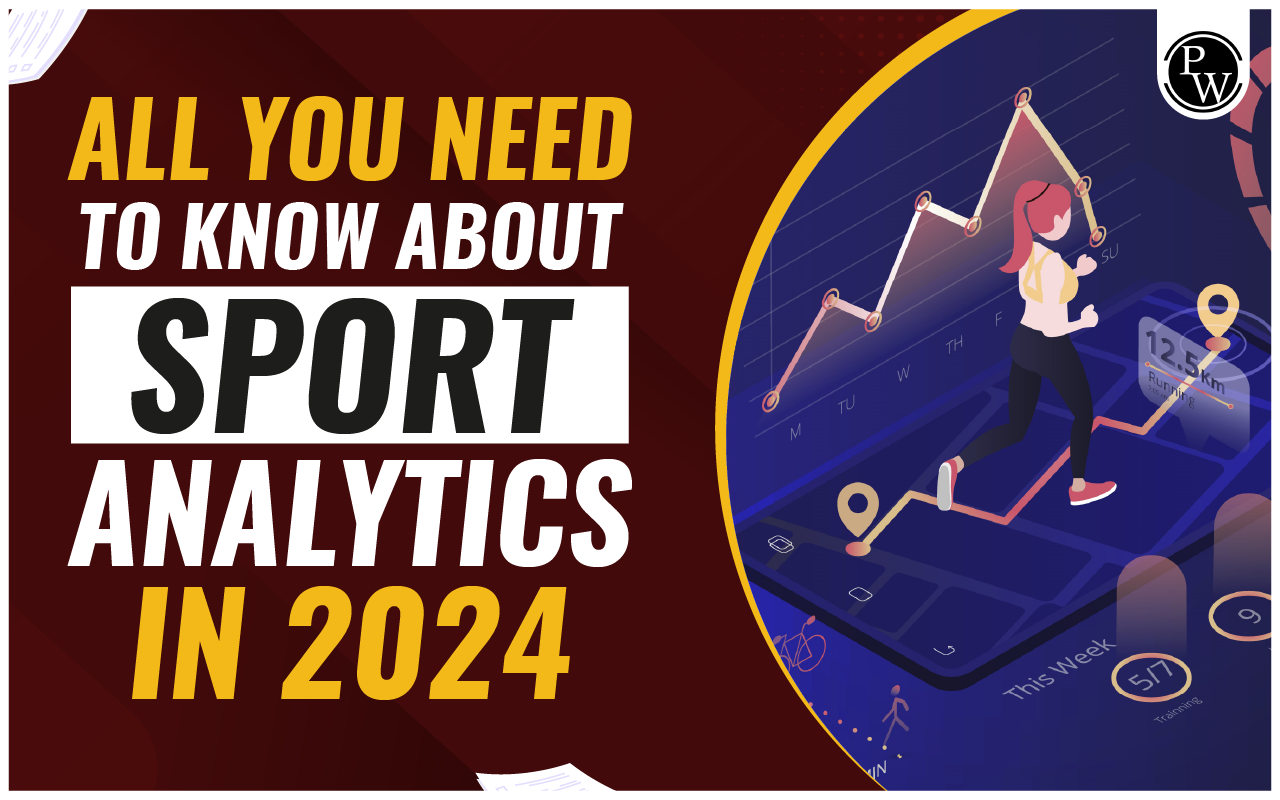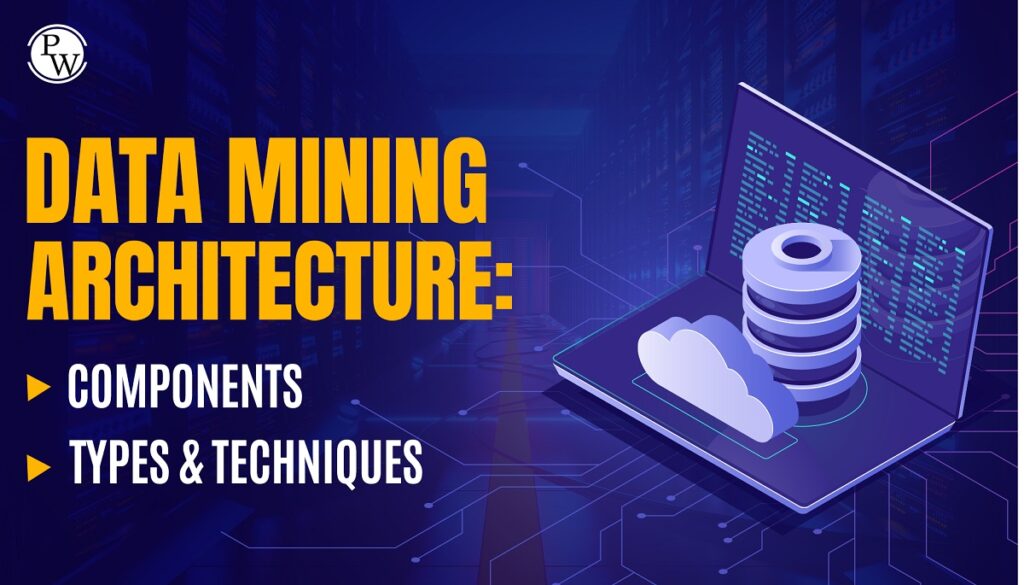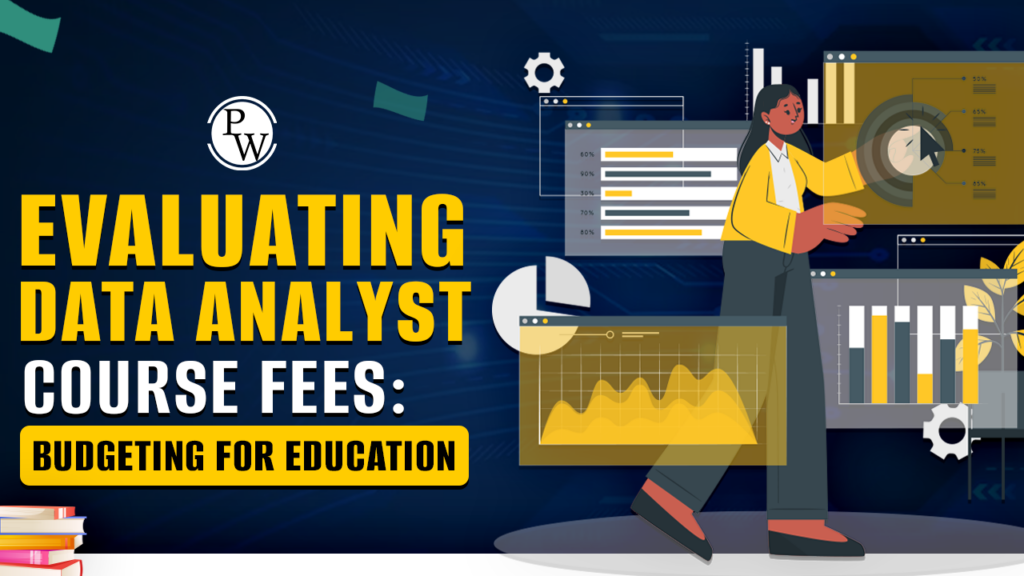Data Science in Sports: In the ever-evolving landscape of sports, the emergence of data science has redefined the way teams strategize, athletes perform, and fans engage with their favourite games. The transition from traditional intuition-based decision-making to a data-driven approach has ushered in a new era of precision and efficiency. In this blog, we’ll talk about data science in sports analytics, its uses, importance in the sports industry and more.
If you want to become a successful data scientist, then the PhysicsWallah Full-Stack Data Science Pro course can be just what you need! With our course, you’ll be taught about data science in detail. Plus, the 100% Job Assistance program makes sure that you can secure high-paying jobs at the top companies in India.
What is Sports Analytics?
Sports analytics blends art and science, tapping into data for player insights, team dynamics, and game strategies. It spans data collection, analysis, and interpretation, covering player stats to game conditions. Though rooted in history, recent tech strides and data abundance thrust it into the sports industry spotlight. Once, decisions relied on experience and intuition. Now, data analytics adds a systematic, evidence-based layer to decision-making. It transforms areas like injury prevention and strategic planning, truly changing the game.
Role of Data Science in the Sports Industry
Data science revolutionizes sports by transforming decision-making, enhancing player performance, and engaging fans. Examining its intricate role in reshaping the sports arena, we uncover key aspects.
Enhanced Decision-Making
Data science in sports excels in furnishing decision-makers with abundant information, aiding strategic planning. Coaches and managers harness historical and real-time data to decide on player selection, game strategies, and in-game tactics. From pinpointing ideal player pairings to assessing play effectiveness and adapting strategies to opponent behavior’s, data-driven insights empower teams to make impactful decisions influencing outcomes.
Performance Optimization
Data science is vital for enhancing player performance in various aspects. Athletes undergo intense physical monitoring using wearable devices, collecting real-time data on heart rate, speed, and endurance. The analysis of this data shapes customized training programs, tracks fatigue, and reduces injury risks. By identifying patterns in performance metrics, sports scientists and coaches can design personalized training regimes that address individual weaknesses and enhance overall player capabilities.
Injury Prevention and Management
Injuries are a significant concern in sports, impacting team dynamics and individual careers. Data science has emerged as a powerful tool for injury prevention and management. Biomechanical data, combined with historical injury records, allows sports professionals to identify potential risk factors and implement targeted interventions. By monitoring players’ workload and movement patterns, teams can proactively manage fatigue and implement strategies to reduce the likelihood of injuries, ensuring that athletes remain in peak condition throughout the season.
Game Strategy Evolution
The advent of advanced analytics has led to a paradigm shift in game strategy. Teams now analyze vast datasets to gain insights into opponent behavior’s, strengths, and weaknesses. This strategic intelligence goes beyond traditional scouting, enabling teams to anticipate and counteract specific plays. Coaches can adjust their game plans dynamically, responding to unfolding events with a level of precision that was once unimaginable. This evolution in strategy has not only elevated the competitiveness of sports but has also contributed to the creation of more engaging and unpredictable contests for fans.
Fan Engagement and Experience
Data science has extended its impact beyond the sidelines to enhance the fan experience. Interactive platforms, powered by analytics, provide fans with a more immersive and personalized engagement. From augmented reality experiences during broadcasts to mobile apps offering real-time statistics, fans can access a treasure trove of information that enriches their understanding of the game. Predictive algorithms in fantasy sports applications add an extra layer of excitement, turning every match into a strategic challenge for fans.
Business and Revenue Generation
Beyond the game itself, data science has become integral to the business side of sports. Teams and organizations utilize data-driven insights for marketing, ticket sales, and sponsorship strategies. Understanding fan preferences and behavior’s allows for targeted marketing campaigns, while data-driven pricing models optimism ticket sales. Sponsorship deals can be strategically aligned based on the reach and demographics of the fan base, maximizing revenue potential for both teams and sponsors.
Technological Integration
The rapid evolution of technology has facilitated the integration of data science into every aspect of sports. Innovations such as player-tracking systems, ball-tracking technologies, and computer vision applications have become commonplace. Artificial intelligence and machine learning algorithms analyze vast datasets at speeds unattainable by human analysts, uncovering patterns and insights that shape strategic decisions in real-time.
Global Collaboration and Competition
Data science has turned sports into a global playing field for analytics professionals. Collaboration between teams and global experts in data science, statistics, and technology is commonplace. This partnership facilitates a continuous exchange of ideas, methodologies, and innovations, nurturing a worldwide community of sports analytics enthusiasts.
Data Science in Sports Courses

Embarking on a career in sports analytics requires more than just a passion for sports and an interest in data. To equip oneself with the necessary skills and knowledge, individuals can turn to a variety of courses and certifications tailored specifically for sports analytics.
These educational opportunities cover a spectrum of topics, from basic statistical concepts to advanced machine learning applications within the context of sports. Here’s a more detailed exploration of the courses available:
- “Decode Data Science with ML 1.0” (PhysicsWallah): While not sports-specific, this comprehensive course is a valuable resource for those aiming to enhance their data science skills using the R programming language. R is widely used in sports analytics for its statistical capabilities.
- “Sports Performance Analytics” (MIT Sloan): An advanced course focusing on the application of analytics in enhancing sports performance. It covers topics such as player tracking, biomechanics, and the integration of data into training regimens.
- Master of Science in Sports Analytics (Northwestern University): This program provides an in-depth exploration of sports analytics, covering areas such as data visualization, machine learning, and sports business. It emphasizes practical applications through hands-on projects.
- “Master in Sports Analytics and Technologies” (University of Michigan): This innovative program integrates data science and sports technology, preparing students for roles at the intersection of analytics and emerging technologies within the sports industry.
- “Certified Sports Analytics Professional” (American Institute of Big Data Professionals): This certification is designed for individuals seeking recognition of their expertise in sports analytics. It covers a range of topics, including data visualization, predictive modelling, and sports business applications.
- “SAS Certified Predictive Modeler Using SAS Enterprise Miner” (SAS): SAS offers a certification program specifically focused on predictive modelling, a key aspect of sports analytics. This certification is beneficial for those looking to specialize in predictive analytics within the sports domain.
Choosing the right combination of courses depends on individual goals, current skill levels, and preferred learning styles. Moreover, staying updated with the latest advancements in data science and sports analytics is crucial, and platforms like Kaggle and GitHub offer opportunities to explore real-world projects and collaborate with other enthusiasts and professionals in the field.
Also read: Data Science in Healthcare: Transforming Patient Outcomes
How Different Sports Use Sports Analytics Data?
Cricket
Cricket, often referred to as a game of statistics, has embraced sports analytics wholeheartedly. Player performance analysis is a cornerstone, where batting averages, strike rates, and bowling figures undergo rigorous scrutiny. Advanced analytics models help in predicting player form and suggesting optimal batting orders. Additionally, data aids in assessing fielding positions, guiding captains to strategically place fielders based on historical data and opposing team dynamics.
Football / Soccer
In the world of football, data is a game-changer. Teams use player tracking systems to collect data on player movements, covering distance covered, sprints, and positional heat maps. Passing accuracy and efficiency metrics help coaches identify playmakers, while fitness data informs substitution decisions. Tactical analysis is crucial, with teams employing data to understand the effectiveness of different formations against specific opponents.
Basketball
Basketball analytics extends beyond traditional statistics like points and rebounds. Player efficiency rating (PER) is a key metric, amalgamating various statistics to evaluate an individual’s overall impact on the game. Shot analysis delves into the efficiency of different types of shots, aiding coaches in developing offensive strategies. Lineup optimization is another critical aspect, leveraging data to determine the most effective player combinations on the court.
Baseball
Baseball’s rich history with statistics has evolved into a sophisticated realm of sabermetrics. Beyond traditional measures like batting averages, on-base percentage (OBP) and slugging percentage (SLG) provide a more comprehensive view of a player’s offensive contributions. Pitching analytics involve assessing a pitcher’s effectiveness through metrics like earned run average (ERA) and WHIP (walks plus hits per inning pitched). Teams use this data for strategic decisions in-game and for scouting new talent.
Hockey
Hockey analytics is all about tracking player movements and interactions with the puck. Player speed and acceleration data offer insights into individual performance, while team-level analysis assesses strategies for offensive and defensive play. Coaches use this information to optimism player rotations, ensuring that each player’s strengths are maximized during different game situations.
Tennis
In the fast-paced world of tennis, data analytics has become a powerful tool for players and coaches. Player movement analysis helps identify patterns in opponents’ game styles, enabling players to adapt their strategies accordingly. Shot selection optimization involves analyzing historical data to determine the most effective shots in different situations, enhancing a player’s overall game plan.
Advancements in Sports Analytics
Recent advancements in sports analytics across all these sports include the integration of wearable technology. Players now wear sensors that track various metrics such as heart rate, acceleration, and fatigue levels in real-time. This data provides a more holistic view of player health and performance, enabling teams to make timely decisions to prevent injuries and optimism player well-being.
Challenges and Future Directions
While sports analytics has come a long way, challenges persist. The interpretation of data and the translation of insights into actionable strategies remain complex tasks. Tech strides forward; AI and machine learning are set to elevate sports analytics. Predictive models, automated insights, and advanced tracking promise a data-rich sports future globally.
How Do Fans Use Sports Analytics Data?
The integration of sports analytics into the fan experience has transformed how enthusiasts engage with their favourite sports. Beyond the excitement of watching games, fans now immerse themselves in the statistical intricacies that underpin player performances and team strategies.
Fantasy Sports
One of the most prominent ways fans utilize sports analytics is through fantasy sports. Platforms like Fantasy Football, Fantasy Baseball, and others allow fans to assemble their virtual dream teams. This involves strategic decision-making based on statistical projections, player matchups, and historical performance data. The success of a fantasy team relies on the fan’s ability to interpret and apply sports analytics to make informed decisions, adding an extra layer of strategy and engagement to their sports experience.
Betting and Predictive Analytics
Sports betting has also undergone a significant transformation due to the integration of analytics. Betting enthusiasts analyze odds, player statistics, and team performance metrics to make more informed predictions. This data-driven approach has not only enhanced the accuracy of predictions but has also created a more dynamic and informed betting environment.
Interactive Applications
Sports media outlets and teams have embraced interactive applications to provide fans with real-time analytics during games. These applications often include live statistical updates, heat maps, and predictive models that offer insights into the unfolding dynamics of the match. This immersive experience enables fans to appreciate the strategic decisions made by players and coaches, fostering a deeper connection with the sport.
Social Media Engagement
The sharing of sports analytics on social media platforms has become a common practice among fans. Whether it’s discussing a player’s advanced metrics, sharing statistical milestones, or debating the effectiveness of certain strategies, social media has become a virtual arena for fans to engage in sports analytics discourse. This not only creates a sense of community among fans but also allows for the exchange of diverse perspectives and insights.
Significant Developments in the Sports Analytics Industry
The sports analytics industry is dynamic, constantly evolving with advancements in technology and an increasing volume of available data. Several noteworthy developments have shaped the landscape in recent years:
Artificial Intelligence and Machine Learning
The integration of artificial intelligence (AI) and machine learning (ML) has revolutionized sports analytics. These technologies enable the analysis of vast datasets in real-time, providing coaches with instantaneous insights during games. AI and ML algorithms can identify patterns, predict player behavior’s, and contribute to more accurate performance assessments.
Player Tracking Technology
The advent of player tracking technology has brought a new dimension to sports analytics. GPS trackers, accelerometers, and other wearable devices monitor player movements and physiological metrics, providing a wealth of data for performance analysis. This technology is particularly valuable in injury prevention, workload management, and optimizing’s training regimens.
Video Analysis and Computer Vision
Advancements in computer vision have enhanced video analysis in sports. Coaches and analysts can break down game footage to a granular level, studying player movements, ball trajectories, and tactical plays. This level of detail aids in refining strategies, identifying areas for improvement, and scouting opponents effectively.
Biometric Data Integration
The inclusion of biometric data, such as heart rate variability and sleep patterns, has become integral to holistic player analysis. Understanding the physiological aspects of athletes provides valuable insights into their overall well-being and can contribute to injury prevention and performance optimization.
Fan Engagement Technologies
Sports analytics has not only impacted how teams operate but has also transformed how fans engage with the sport. Augmented reality (AR), virtual reality (VR), and interactive applications provide fans with immersive experiences. From virtual stadiums to personalized statistics overlays, these technologies enhance the fan experience and contribute to a more interactive and dynamic sports ecosystem.
How to Become a Sport Analyst?
Becoming a sports analyst involves a combination of education, practical experience, and a passion for both sports and data. Here’s a step-by-step guide on how to embark on a career in sports analytics:
Educational Requirements
Start by acquiring a strong educational foundation. Many sports analysts hold degrees in statistics, data science, computer science, or a related field. Specialized programs or certifications in sports analytics can provide a targeted and industry-relevant curriculum.
Practical Steps
- Build Technical Skills: Develop proficiency in programming languages such as Python or R. Familiarize yourself with data visualization tools and statistical analysis techniques.
- Gain Practical Experience: Apply your skills to real-world projects. This could involve analyzing publicly available sports data, participating in online competitions, or working on internships with sports teams or analytics firms.
- Network in the Industry: Attend conferences, workshops, and networking events related to sports analytics. Building connections with professionals already in the field can open doors to opportunities and provide valuable insights.
Job Description of a Sports Analytics Professional
Technical Proficiency
A sports analytics professional should be well-versed in statistical modelling, data manipulation, and programming languages. Proficiency in tools such as SQL, Excel, and specialized sports analytics software is often required.
Soft Skills
- Communication: The ability to convey complex data findings to non-technical stakeholders.
- Teamwork: Collaborating with coaches, players, and other analysts to achieve common goals.
- Problem-solving: Approaching challenges with a logical and innovative mindset.
Domain Knowledge
Understanding the intricacies of the sports being analyzed is crucial. This includes knowledge of game rules, player roles, and the broader dynamics of the sports industry.
Experience Required
Entry-level positions may require a foundational understanding of data science concepts and basic statistical knowledge. As you progress in your career, gaining experience in specific sports domains and mastering advanced analytical techniques becomes essential.
Top 5 Books to Read on Sports Analytics
For those eager to deepen their understanding of sports analytics, here’s a curated list of five must-read books:
- “Moneyball” by Michael Lewis: This classic delves into the revolutionary use of analytics in baseball, highlighting the transformative impact of data-driven decision-making.
- “Basketball on Paper” by Dean Oliver: Focused on basketball analytics, this book provides a comprehensive overview of statistical analysis in the context of the sport.
- “Soccernomics” by Simon Kuper and Stefan Szymanski: Exploring the economics and analytics behind soccer, this book offers insights into how data shapes strategies and decisions in the football world.
- “The Book: Playing the Percentages in Baseball” by Tom Tango, Mitchel Lichtman, and Andrew Dolphin: A deep dive into the advanced metrics used in baseball, offering a detailed understanding of sabermetrics.
- “Football Hackers” by Christoph Biermann: This book examines the use of data and analytics in football, providing a global perspective on how technology is influencing the beautiful game.
Also read: The Future of Data Science Course in India: Trends to Watch Out
Conclusion
The fusion of data science and sports has transcended the boundaries of traditional methodologies, ushering in an era where precision and insight are paramount. From the courts and fields to the screens of avid fans, sports analytics continues to shape the way we understand, play, and enjoy our favourite games. As technology advances and data sources proliferate, the journey of discovery in the world of sports analytics promises to be an exhilarating and ever-evolving one. Whether you’re a player, coach, analyst, or fan, the data-driven revolution is reshaping the game for everyone involved.
Don’t miss out on this opportunity to become a highly sought-after data scientist. Our Full Stack Data Science Pro course equips you with the industry-demanded skills and hands-on experience to succeed in this dynamic field. Enroll now and open doors to a rewarding career in data science!
FAQs
Can sports analytics be applied to sports beyond the mainstream ones mentioned in the article?
Absolutely, sports analytics principles can be applied to virtually any sport, adapting methodologies to suit the specific dynamics and metrics relevant to each game.
What impact has data science had on player recruitment in sports?
Data science has transformed player recruitment by providing teams with advanced metrics for scouting and assessing player potential, moving beyond traditional scouting methods.
How do sports analytics contribute to the development of youth athletes?
Youth development benefits from sports analytics by identifying areas for improvement, tailoring training programs, and providing personalised coaching insights for aspiring athletes.
Are there ethical considerations in the use of data science in sports analytics?
Yes, ethical considerations include data privacy, consent, and fair use, requiring professionals to adhere to ethical guidelines and regulations in their analyses.
Can sports analytics predict the outcome of games accurately?
While sports analytics can provide insights and predictions, the unpredictability of sports ensures that outcomes are never guaranteed, adding to the excitement of the games.





